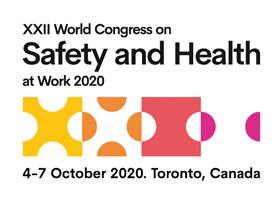Scheduled maintenance - Thursday, July 12 at 5:00 PM EDT
We expect this update to take about an hour. Access to this website will be unavailable during this time.
On Topic

Ben was looking forward to an extended vacation from work to visit his family in China. Three days into the trip, however, the world learned about a new coronavirus. He worried about how to protect himself and his family, but his concerns also turned to thoughts about the return home and to the workplace. What was the safest thing to do under his circumstances?
The identification of 2019 Novel Coronavirus (COVID-19) in China in late 2019 has highlighted the need for workplaces in Canada to follow good practices to minimize the potential for infection. Coronaviruses are a large family of common viruses that are typically associated with mild illnesses. However, novel strains can develop into serious diseases, including Middle East Respiratory Syndrome (MERS-CoV) and Severe Acute Respiratory Syndrome (SARS-CoV).
Coronaviruses are common in animals, but in rare cases, the virus can evolve to infect people, then spread from person-to-person. The route of transmission is not always known, but the viruses are generally thought to spread by respiratory droplets when people are in close contact.
People caring for individuals with a coronavirus are at the greatest risk for contracting the disease such as health care workers and others who work close to their clients or patients. However, everyone can adopt good hygiene practices to minimize the potential for infection.
Prevent the spread
Workplaces can promote the adoption of many good hygiene practices that will help prevent the spread of any virus or infection, including the flu. The most important day-to-day action everyone can take is proper and regular hand washing with soap and water. Individuals should use tissues, or cough and sneeze into their arm or elbow (not their hand) while turning away from other people. Dispose of used tissues and wash your hands right away. Avoid touching your eyes, nose or mouth, especially after you have touched surfaces such as doorknobs and handrails that others have touched. Avoid sharing cups, glasses, dishes and cutlery, and wash your dishes with soap and water immediately after use. If a vaccine is available, encourage everyone to get the shot, or consider setting up a mini clinic for convenience and coverage.
Have a policy in place
Workplaces should have a policy in place that outlines requirements to follow when people may be sick, or when they are absent because they are caring for others. This policy should indicate how the individual will notify the workplace of their situation. Let workers know they can and should stay home if they are not feeling well. Workplaces must plan for these absences as well as for possible increases and decreases in business, and for changes in how they do their business. Provide cross-training for coverage of job duties, and make sure that workers are comfortable performing these added job tasks and responsibilities. Employers should also stay up to date on the latest situation by monitoring public health agency websites and keep everyone informed.
Develop an infection control plan
In addition to having a policy in place, workplaces (non-healthcare) can set up an infection control plan that includes providing clean hand washing facilities, or alcohol-based sanitizers when regular facilities are not available, for example to workers on the road. Objects that are touched frequently, including doorknobs, handles, and railings, should be cleaned more often using regular disinfectants or soap and water. If a person has been suspected or identified with an infection, employers should clean that person’s station, along with other areas where they have been. Ventilation systems should be checked for proper functioning.
Provide boxes of tissue throughout the workplace and encourage its use by displaying good hygiene practice posters. Consider temporarily removing magazines and papers from waiting areas or common rooms. Use social distancing techniques as necessary to minimize contact. Conduct business via telephone or online, allow employees to work from home, and encourage flexible work hours to avoid peak public transportation times and crowding the workplace.
Resources
Tips and Tools

When driving by a farm, you many not see all the work that is taking place. Farms are hives of activity where workers face daily hazards, some with the potential to be fatal. Employers are legally required to provide a safe work environment, and this requirement is no different on the farm. Producers must establish safe work procedures, inform workers of hazards, and provide education and training so that workers can do their jobs safely.
Preventive measures for farmers
Here are some health and safety tips for producers and workers:
Canadian Agricultural Safety Week runs from March 15-21, 2020. Visit the Canadian Agricultural Safety Association’s website for toolbox talks, producer tools, and events.
CCOHS Resources
Partner News

 The XXII World Congress on Safety and Health at Work, taking place October 4-7, 2020 in Toronto, Canada, is offering a fellowship program to help support occupational safety and health professionals from developing countries in attending the global prevention event.
The XXII World Congress on Safety and Health at Work, taking place October 4-7, 2020 in Toronto, Canada, is offering a fellowship program to help support occupational safety and health professionals from developing countries in attending the global prevention event.
Successful program applicants will receive funding for the costs of travel to the Congress, accommodations, and the Congress registration fee. Partial fellowships may also be granted.
The fellowship application process is open until April 15. For more information, visit the Congress website.
The 2020 World Congress is organized by the International Labour Organization and the International Social Security Association and is co-hosted by CCOHS and the Institute for Work and Health.
Podcasts

This month's feature podcast is Bridging the Gap Between Caregiving and Work. Also, March 16-22 is Global Brain Awareness week. Help raise awareness and listen to Understanding Workplace Concussions.
Feature Podcast: Bridging the Gap Between Caregiving and Work
The CSA Standard Carer-inclusive and accommodating organizations standard was created to help employers support workers in Canada who provide care and assistance to family or friends living with ongoing conditions, while working at the same time. In this episode Dr. Allison Williams, chair of the committee that created the standard, discusses how workplaces can support the growing numbers of carer-workers.
The podcast runs 14:37 minutes. Listen to the podcast now.
Encore Podcast: Understanding Workplace Concussions
Concussions can occur anywhere, including in the workplace. Statistics reveal that there has been an increase in the number of time loss claims for work-related concussions. This podcast provides tips and information to help understand concussions and how to manage them in the workplace.
The podcast runs 6:00 minutes. Listen to the podcast now.
CCOHS produces free monthly podcasts on a wide variety of topics designed to keep you current with information, tips, and insights into the health, safety, and well-being of working Canadians. You can download the audio segment to your computer or MP3 player and listen to it at your own convenience... or on the go!
See the complete list of podcast topics. Better yet, subscribe to the series on iTunes and don't miss a single episode. Listen on Spotify.
Last Word.

It's that time of year again when we check in with you to see how we're doing. We are continually making improvements to the Report based on feedback we receive from our readers. The Report is emailed to over 20,000 readers in more than 100 countries around the world every month.
We need your help
Please take a few minutes to take our Health and Safety Report Readership Survey and tell us what you think.

You could win a $100 Canadian Tire Gift Card.
This is your chance to tell us what you want to see in the newsletter and what you need to help you and others work safely.
Enter the draw
Remember to provide your name and email address if you wish to be entered into the draw. Your information will not be used for any other purpose; we promise. We will be making the draw March 31, 2020.
Thank you - with your help we can make the Report even better.
The Health and Safety Report, a free monthly newsletter produced by the Canadian Centre for Occupational Health and Safety (CCOHS), provides information, advice, and resources that help support a safe and healthy work environment and the total well being of workers.
You can unsubscribe at any time. If you have been sent this newsletter by a friend, why not subscribe yourself?
Concerned about privacy? We don’t sell or share your personal information. See our Privacy Policy.
CCOHS 135 Hunter St. E., Hamilton, ON L8N 1M5
1-800-668-4284 clientservices@ccohs.ca
www.ccohs.ca
© 2025, Canadian Centre for Occupational Health and Safety
Podcast
December 10
October 28-29, 2026